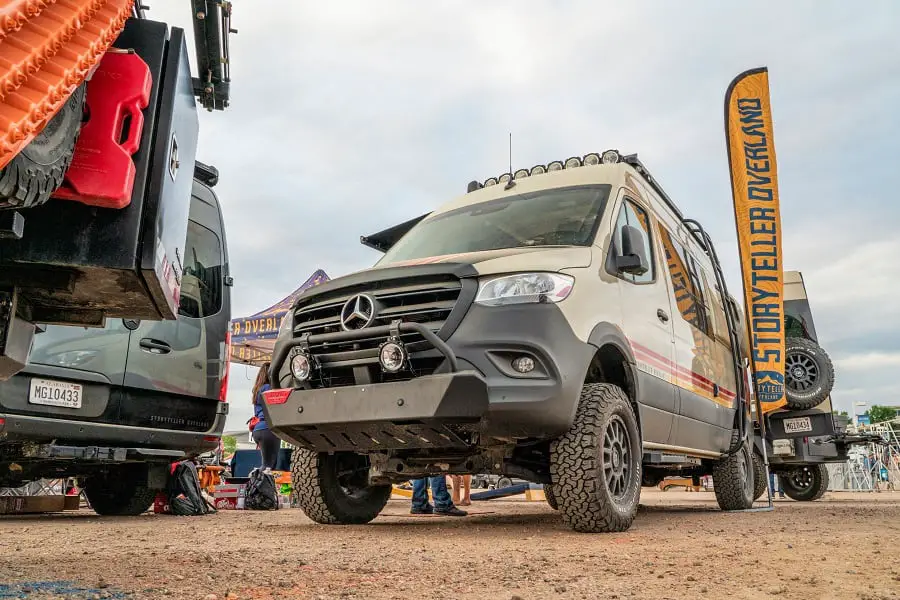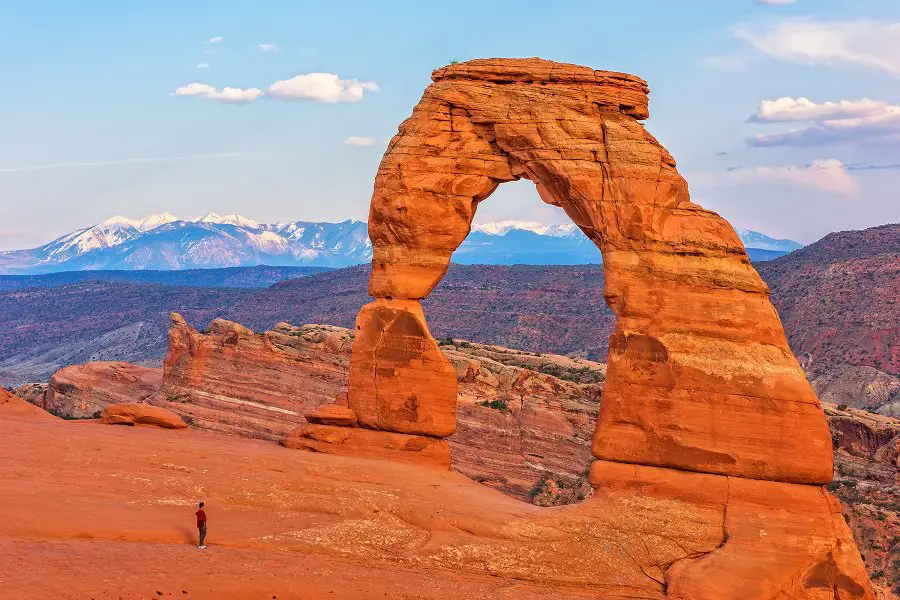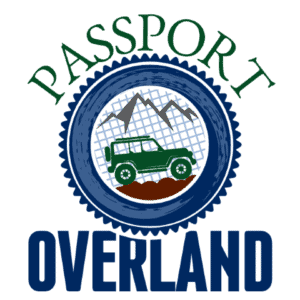
The first thing you need to know is that an overlander build is not easy. It can be time-consuming, frustrating, and challenging.
That’s why I want to share my personal experience with you so that when you are ready for your overlander build, you will have some things planned and won’t feel like this project has taken over your life!
What Makes a Good Overlander Build?
This descent in Anzo Borrego was marred by brake failure (oops!), but the 4Runner still made it to the bottom.
Cost: Repair and Ongoing Maintenance
As long as you’re like me and shopping on a typical budget, the price will be your priority. There are two costs to consider: the purchase price and the ongoing maintenance and repair costs.
These are frequently bimodal; the higher the purchase price, the lower the ongoing maintenance and repair costs.
It would help if you based your choice on factors such as engine longevity, horsepower, fuel efficiency, and availability (in the area you want to travel through). At the very least, you want two of those variables to be at their maximum.
Toyota 4Runners from the 1980s and 1990s have reliable engines like the 22RE in them, and they’re still around today. On top of that, they’re sluggish. Slow isn’t for everyone.
Drivetrain: What Is Best?
However, the failure claims in automobiles with independent front suspension (IFS) or automatic gearboxes are exaggerated. When properly cared for, they’ll improve your driving experience and make going off-road much simpler.
Off-road, having an open differential is going to be a huge concern. If you find yourself on ice, snow, loose gravel, or with a wheel in the air, you’ll be glad you have a shovel in your car.
On the back axle, you must have a limited-slip differential (LSD). If you can, get a car with an electronic or air-locking differential if you can locate one. First and foremost, you’ll need one for the back.
Is there a lot of water there? That’s OK. For hours, I was slowed down by the closed gate on the other side.
Be Careful About The Stress On Your Suspension
Most cars considered for overland travel have enough clearance without lifts, but they are good to have. Stock suspensions, on the other hand, aren’t designed to handle big loads.
If you’re going to upgrade your suspension, be sure it can handle the added weight—or don’t put too much stress on the standard setup.
Supplemental Assistance For Your Overlander Build
Your ability to modify your car will be determined by how simple and inexpensive this process is. If the car was popular in the United States, finding accessories like lockers, lifts, bumpers, and stereos would be simpler.
That’s great news for the capabilities of your car as well as your wallet. At the very least, you should have a vibrant owner’s forum where you may learn from other experienced owners. Using them will save you time, money, and frustration in the long run.
Overlander Build Accessories
Water, shelter, and food are all necessities when traveling in remote areas. For vehicle camping, you need a tent, a cooler, and a few bottles of water, so if you’ve done it before, you know how to do it well.
Extra gasoline, a quality air compressor, a puncture repair kit, a full-sized spare, a quality jack, a shovel, and vehicle recovery equipment are also required. You must do basic repairs on your vehicle and get yourself and your car out of most jams.
What Do You Need it For?
Make a plan before you start working on your overland vehicle. Is it primarily used for weekend jaunts around town on bike paths and hiking trails, with the occasional camping trip thrown in? Is it to take a road trip throughout Europe or spend a week or two each year in Moab, Utah?

Delicate Arch In Arches National Park, Moab, Utah USA
Maybe you’re thinking of going to Erg Chebbi in Morocco or Patagonia in the austral summer for a more adventurous and secluded vacation. Alternatively, you may be preparing to embark on a year-long journey around the world as a full-time overlander.
Whatever Your Plans, Check the Weather
You’re going to drive on blacktop the whole way. What will you do if your car has to go off-road? Do you want to do this in the sand or the snow? How about sludge or streams?
Will you be part of a group, or will you be driving alone? Do you know enough about cars to be able to fix them on your own? Do you have access to spare parts on your journey?
Is a 44 campervan necessary for your trip, or would a 2wd suffice?
All Decisions Point to What Customizations You Need.
Those who don’t know the answers to these questions risk being unsatisfied with their purchase, wasting money, or not investing in the correct vehicle for their overlander build. Or, even worse, you may find yourself stranded because those glitzy additions turned out to be completely ineffective.
Recognize this and make the necessary changes to your vacation arrangements to reflect it. Even if you go above and beyond, knowing whether you need a modification puts you in charge of your spending and tinkering decisions.
I didn’t require a Unimog for most of my off-road excursions, but I wished I had one. Because I chose to go the hard way, I found myself in desperate need of it!
What Do You Need To Buy?
An Overlanding Vehicle For Your Overlander Build
I paid $3,200 for a used 1987 Toyota 4Runner with 167,000 miles on the odometer. You should search for a car with a manual gearbox, manual windows and locks, and someone who has taken good care of it before if you want to do the same. Why? It’s a problem with these vehicles’ automatic transmissions.
In tough off-road terrain, they are bulky, inefficient, unreliable, and take away driver control. In addition, keep in mind that this vehicle is almost 30 years old; as a result, components like electric motors, switches, and cables are no longer reliable.
The year 1985 is the coveted holy grail. Moreover, it is equipped with fuel injection as well as a solid front axle. It has the extra off-road capability of older trucks but with fuel injection’s ease of use.
Best Wheels For Overlanding
For $200 on Craigslist, I bought 16-inch wheels for a 2008 Toyota Tacoma. With this size, you’ll have more options for current tires than you would have had with the factory-installed 15-inch wheels.
If you don’t know your bolt pattern or offset, do some research and look for wheels that fit your vehicle, or prepare to buy an adaptor kit. If you’re fortunate, you may even discover a set of OE all-terrain wheels still mounted with the original equipment (OE) tires.
Cooper Discoverer STT Pro (265/75-16) tires, five for $1,100. Tires are the most critical part of any vehicle after it has started moving. Only your tires make direct contact with the road. Therefore everything else—braking system, suspension, and engine—can never match your tires in quality.
I put 15,000 miles on them already, and I was confident in my decision to recommend them. They’re the greatest truck tires for both expeditions and regular driving.
Suspension
Old Man Emu nitrogen shocks and leaf springs helped sustain the extra weight of the luggage while also improving the vehicle’s handling and riding comfort. In addition to the $400 improvement, it took a couple of hours in the driveway to complete.
I installed heavy-duty springs to account for the additional weight of the heavy-duty bumpers, fuel, and other items. Although the rear springs are the same as the pickup’s, they have to support the fiberglass top and, heavier, the glassed tailgate of 4Runners. Toyota 4Runners are well-known for their droopy rear ends.
There will be no one to offer you a tow out in the middle of nowhere in Baja, so be sure your car is capable of navigating soft sand without getting trapped or breaking down.
Gearing and Differentials
Despite being bulletproof, the 22RE is a famously weak weapon. Stock gearing wouldn’t have worked with the car’s oversize tires and increased weight of 500 pounds.
I replaced the old differential with a Detroit TrueTrac limited slip instead of an ARB air locker because it was less expensive. Using an LSD helps you avoid obstacles by sending power to the wheels while maintaining grip.
It’s not as good as the locking option, but it’s simpler to use and less expensive. I spent $1,900 on labor because I hired a pro, but if you do your tinkering, you’ll save $1000.
Bumpers Custom steel bumpers are popular among the general public due to their appealing visual appearance. To save money, start with the least expensive part of the project. Extra gas, a full-size spare, and a hi-lift jack will all require it.
You’ll also get a great place to recover. Putting the rear bumper on my car was expensive. It cost me over $2,000 to build it because of the incorrect spacing on the bumper that I received.
Purchase a front bumper from Addicted Offroad in Fort Collins, Colorado, if you’re willing to spend the money and want an excellent experience and product. The winch mount was included in the $700 shipping fee for mine.
Using a $400 winch, you can hang your automobile on its wheels. It has a 10,000-pound weight capacity and a stretch-free synthetic wire, which I got from Amazon.
Maintaining Your Overlander Build
It was worth it to spend extra money on the radiator and water pump replacement, belts, and battery installation.
Additional Necessary Equipment
- Compressor for air on the go
- straps for a hi-lift jack
- Ax
- Shovel
- Jerry can with a tire patch kit
Final Thoughts On Your Overlander Build
If you want to get into overlanding you just need to get started. Find your entry point. Meaning, if you have a truck, then add a modification to make it safer and more reliable. Then go from there. The more you learn about self-reliance the better off you will be in the wilds. Go, have fun prepping for your adventure, then just do it!
Now that you have your build, check out how to organize your storage here.

